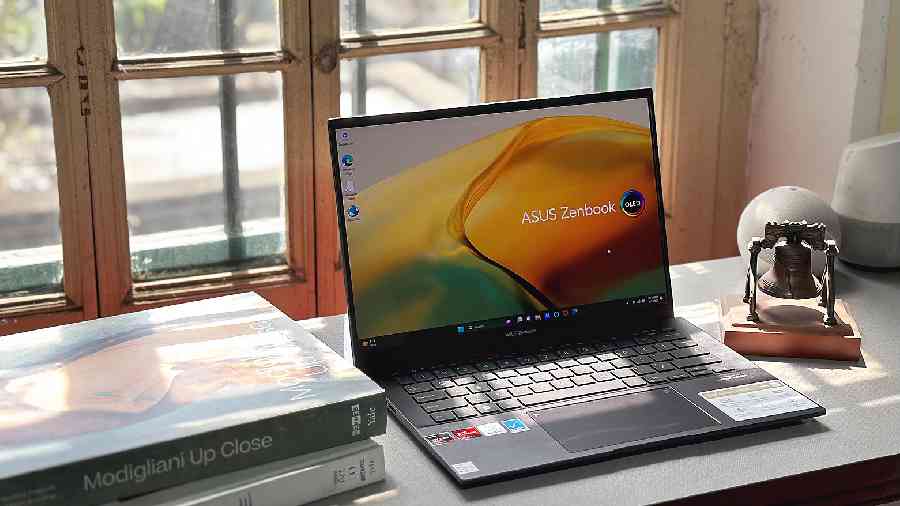Most people have realised that it’s better to go for a smartphone that will last at least two-three years rather than upgrading annually. The same goes for laptops, which is a costly device and if it doesn’t last you four years, it will be a waste of money. For a business laptop, some of the things to look at are an all-day battery life, reliable keyboard and trackpad, a good set of ports and enough memory. If you are comfortable with MacOS, the MacBook Air and Pro will be easy choices. For Windows users things are slightly complicated. One company that has been hitting the high notes for a few years is Asus, which has a range of devices, from gaming machines to business laptops. Recently, we reviewed the Asus ZenBook 14 OLED (2023), which has plenty going in its favour.
Throw any task at it
The variant that was sent for review is powered by Ryzen 7 7730U processor, which is based on the power-efficient 7nm architecture and has eight cores, 16 threads, a clock speed of 4.5Ghz and an eight-core Radeon graphics.
Are you confused about the processor name? There is an easy way to decipher it. The first number denotes the processor year rather than the architecture, with 7 being 2023, 8 being 2024, 9 being 2025 and so on. Next, there's the segment running from one to nine though eight here can mean either it’s a Ryzen 7 or 9. The most important number here is the third one since it'll tell you which architecture your CPU is based on, from Zen 1 onwards. Finally, there's the upper or lower zero to five segment followed by one or two letters that determine TDP ranges, running from 9W and less all the way up to 55W and higher for the HX series.
It’s a premium, light laptop meant primarily for the workplace. What the AMD chipset brings is power efficiency. Making this one’s work laptop would be a great decision as it’s speedy, responsive and breezes through all the tasks. Keep as many tabs open on the browser as you want, playing 4K videos, working on Photoshop, MS Word and whatnot. Yet, the laptop won’t slow down or heat up. The thermals are quite good and the fans flare up only when power-hungry apps run over a period of time. The fan profile moves between Whisper, Standard and Performance modes. For everyday usage, the laptop stays cool. If you want to upgrade, you can change the SSD on the machine while the RAM is soldered on but 16GB should work for most people.
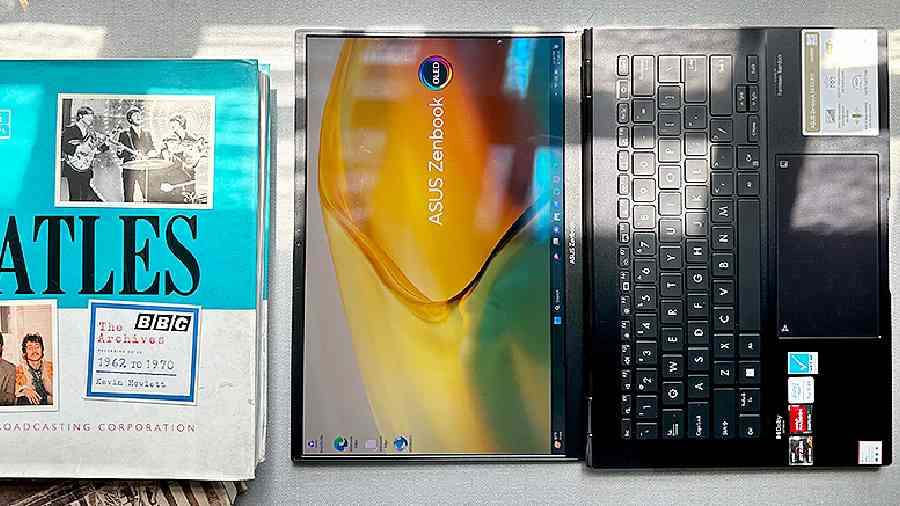
You can open out the screen to 180 degrees flat
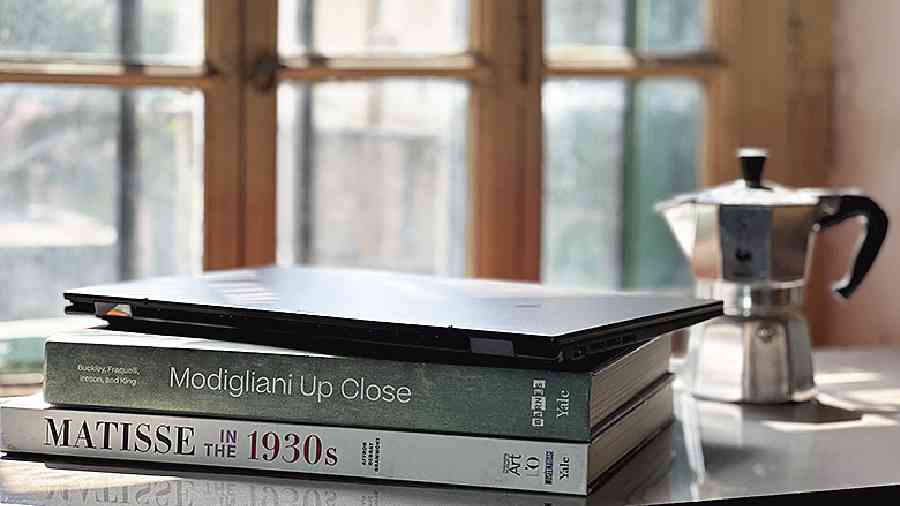
The machine is light and can slip into any bag
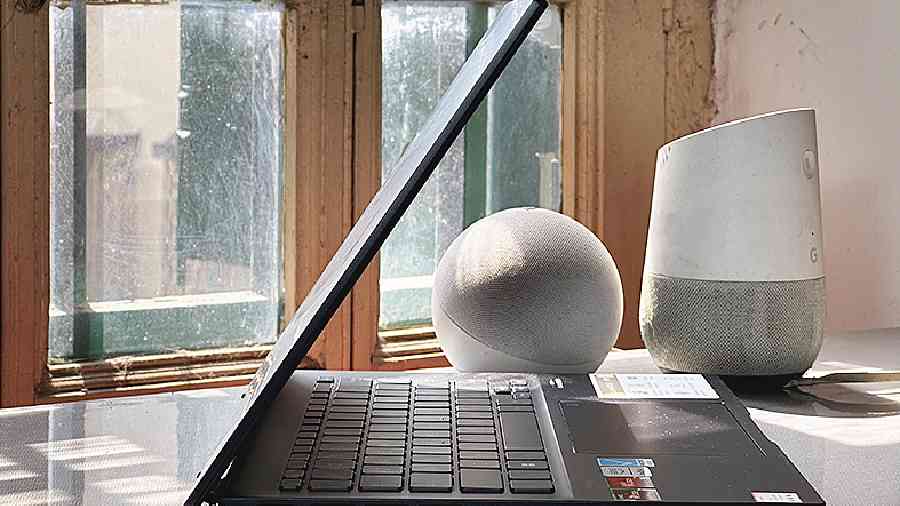
The hinges on the laptop are sturdy
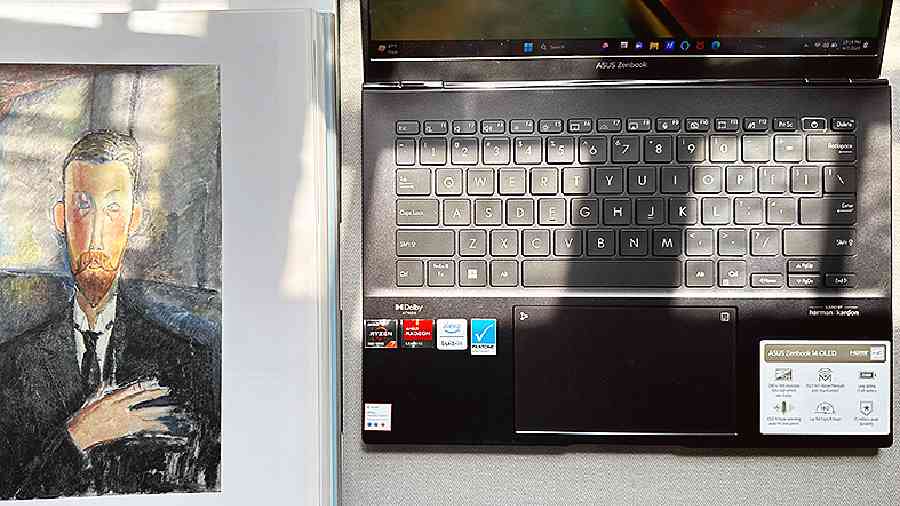
The keyboard is well designed and has almost no flex
Nothing can beat an OLED panel
Besides performance, why would you like to get this laptop? The display. It’s one of the biggest highlights of the ZenBook series. It has a gorgeous 14-inch OLED display with 2.8K resolution of 2,880x1,800.
The side bezels are very slim while the longer bezel on the top is slightly thick because it contains the webcam. This is a display where blacks will come through looking deep. In case you have an older TV screen, you may notice that the deepest of blacks have a touch of grey. Not here. The colours are vibrant and vivid, no matter the angle from which you are looking at. This is important because you can open the display at up to 180 degrees, that is, flat. Why would you do that? Say you have a 3D rendering which you would like a few colleagues to look at. People can gather around the table and the display can be kept flat. Everyone will get to see the same colours.
The display offers 90Hz refresh rate, 0.2ms response time, 600 nits of brightness and 100 per cent DCI-P3 HDR. All this translates into a fantastic experience when you are watching 4K HDR videos or simply browsing the web. Everything will feel super smooth because of the high refresh rate. The 16:10 aspect ratio also helps because more content fits on the screen, and this helps when you are working on Photoshop or Adobe Premiere Pro.
Keeping the display company is an excellent set of bottom-firing speakers that can get loud and offer good bass. The overall soundstage is good and vocals are highlighted while musical instruments will come across as balanced. All this has been done to give you a truly immersive experience while watching films.
Should you buy it?
The design of the laptop is something we have come to love about the Zenbook, that is, premium finish and a machine that’s light. The keyboard has no flex and typing on it is a joy, thanks to good key travel. Unlike on many Windows laptop, the power button comes before the delete button. If the power button is kept in the corner, users, who are used to a desktop setup, will keep pressing it accidentally.
The ports on the laptop include one USB 3.2 Gen 2 Type-A, two USB 3.2 Gen 2 Type-C support display/ power delivery, one HDMI 2.1, 3.5mm combo audio jack and micro SD card reader. It’s enough for a business laptop. There are also enough vents on the side and on the bottom to dispense heat. And if you open up the laptop to 180 degrees, the ErgoLift mechanism raises the laptop a bit, helping create some space between the table and the machine.
Asus hasn’t cringed on the webcam. The 1080p webcam is better than you get on most laptops. And the mic setup is equally good to tackle video conferences.
There is a 75WHr battery and it comes with a 65W USB-C PD charger. If you spend most of the day browsing, editing documents and doing a few video conferences, you will get 10-odd hours out of it. While charging, the battery goes from zero to 60 per cent in just 45 minutes. For connectivity, you get Wi-Fi 6E and Bluetooth 5.
Asus ZenBook 14 OLED (2023) is slim and light but when it comes to power, there is plenty of it. And the display is gorgeous.
